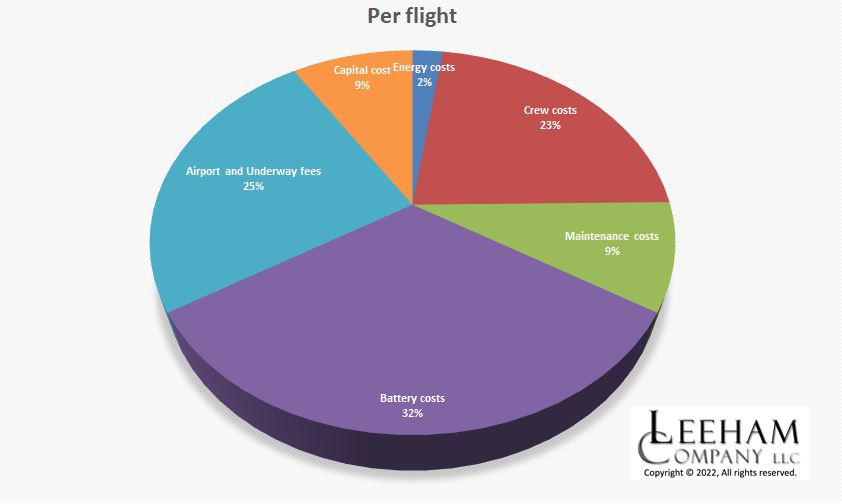
A main selling point of companies developing next-generation electric aircraft is that the nearing launch of air taxis will not only provide passengers faster commute times across cities or to airports than current ground transportation, but also offer those services at costs close to those of regular cabs. A recent study, however, raises questions about what those prices will actually involve.
The information comes from the summary of a paper published earlier this month by aviation sector information and analysis site Leeham News – specifically its blog written by former Swedish fighter pilot and aeronautical engineer Bjorn Fehrm. The precis offers the broad strokes of a subscription deep dive detailing what the cost structures will look like for air taxi companies when they are expected to begin operation later this decade – possibly as early as 2024.
Read: Joby eVTOLs to provide airport air taxi service to Delta passengers under new deal
What Fehrm’s number crunching suggests is both a different distribution of expenditures than most electric vertical takeoff and landing (eVTOL) aircraft developers tend to predict, and higher per-mile air taxi operating outlays – and corresponding prices for passengers.
“The dominant cost factors are not the ones eVTOL companies love to discuss, like the electricity bills,” Fehrm writes. “We have analyzed the operational costs for airliners and feeder aircraft for almost a decade with our aircraft performance model. An eVTOL is not that different; the cost factors are the same, but their content differs.”
Fehrm’s study is based on a scenario of air taxis acting as feeders for airlines by shuttling passengers between airports and city centers. His marquee finding is that costs to those service providers for 30 minute flights “would be just over $200.” That works out to $6.67 per 60 seconds.
Figuring an airport is about 25 miles from a theoretical city center, an air taxi with a 150 mph cruising speed like Archer’s production Midnight craft would complete the trip in about 10 minutes – if it were full-throttle the entire way.
The company has estimated operational costs of flights will run about $3.30 per passenger/mile – half what Fehrm calculates it’ll be when his $6.67 per minute calculation is translated into miles. Previous passenger/mile projections by German eVTOL developer Lilium, meanwhile, are more than a buck lower than Archer’s, while NASA studies have put the average price somewhere between $6 and $11.
If Fehrm is right, either clients will be facing a significantly larger differential than expected between air taxis and regular cabs – with road rates in higher-end New York averaging $4.25 per mile; or aerial service providers will have to eat costs and forsake profits in early years until travelers get hooked on new aerial commuting options.
Read: Archer, United announce air taxi service between Manhattan and Newark Airport
Fehrm produced similarly different operational cost structures than air taxi developers usually cite, which are often heavy on clean electric power sources.
Instead, Fehrm predicts those will represent just 2% of typical overhead, with battery costs (32%), airport and underway fees (25%), and crew charges (23%) constituting three-quarters of expenses.
“The conclusion is the cost eVTOL (original equipment manufacturers) love to discuss – the energy cost– is non-relevant to the operations costs of eVTOL air taxis,” he says.
The bright side in all that for manufacturers and operators of future air taxi services? With many eVTOL craft already designed for automated flight – or capable of being adapted to pilot-less operation – the 23% chunk of crew charges will vanish after an initial roll-out and adaptation period. That may well be the difference between early loss-leading, and a shift to profitability.
Image: Leeham News
FTC: We use income earning auto affiliate links. More.



Comments